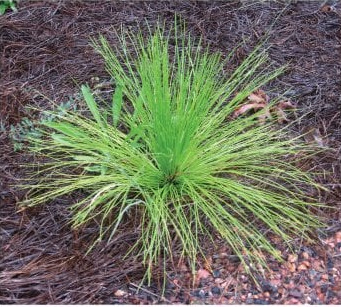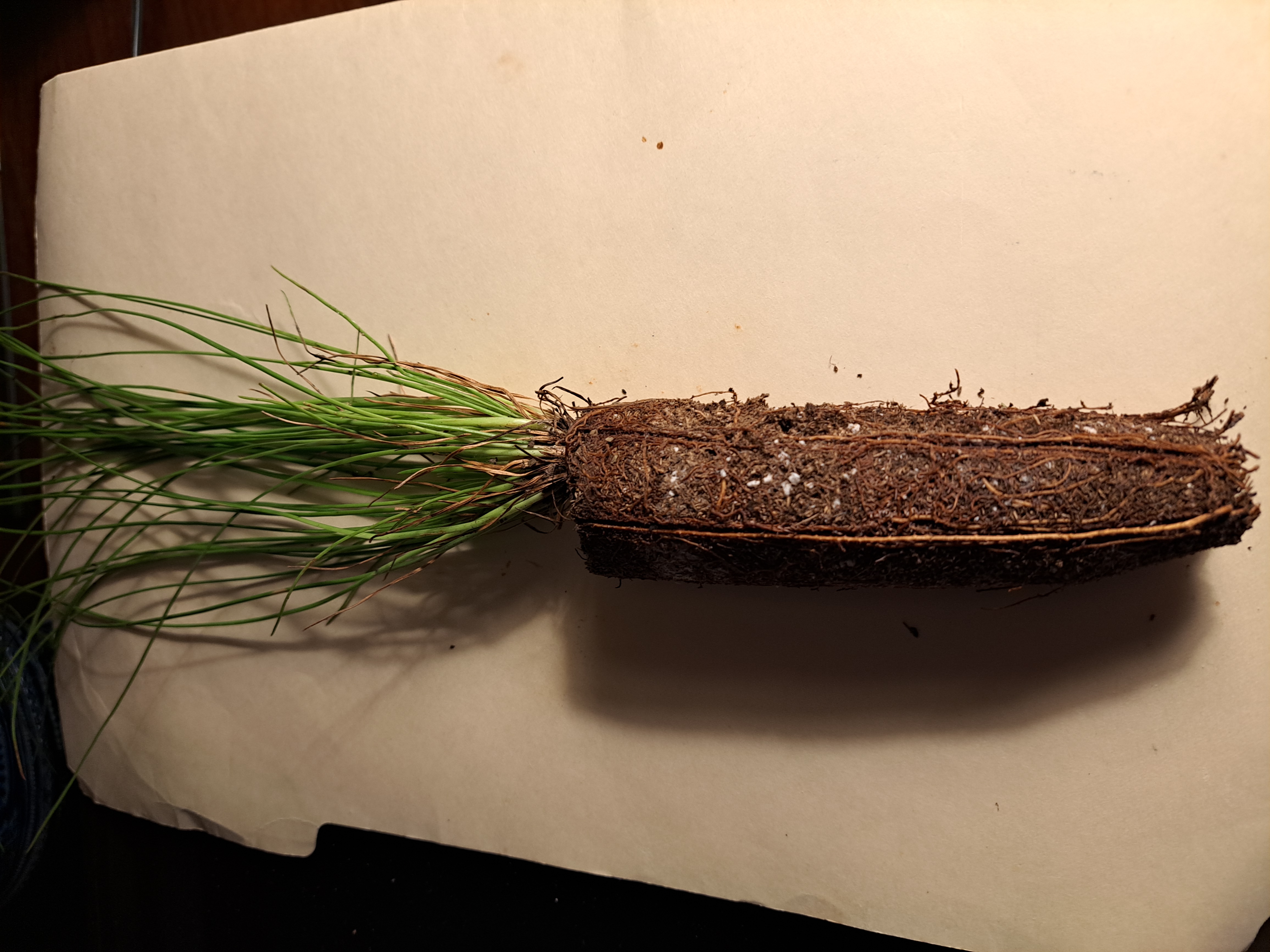


CAUTION 1 ! — Don't leave a Longleaf seedling in a pot for more than a week or two. Why not? Because you'll make the same mistake I did a couple of years ago.The seedling expends almost all of its energy into sending its taproot straight down into the earth. If it's in a pot, it can't do that, and the root will curl within the pot and become misshapen and unhealthy.
A few years ago I put 25 Longleaf seedlings into one-gallon pots with topsoil in March of that year, with the intention of planting them into the earth in September. When in September I tried to pick up a pot, I couldn't, because the tree had sent down a taproot through the quarter-sized hole in the bottom of the pot. The pots sitting on soil were anchored to the ground, and the root couldn't be extricated. The pots sitting on concrete had dead taproots.
CAUTION 2 ! —A Longleaf grassy-stage seedling doesn't do anything above ground for the first year or two of its life. Don't make the mistake some have of thinking it's dead and ripping it out. It will devote almost all its energy into sending its taproot down vertically to a depth of three to five feet. Only when it's satisfied that it is firmly anchored in the earth will it begin to grow upward above the soil line.

These are my suggestions for proper planting:

Longleaf pine seedlings are said to sleep, creep, and then leap. To the right is a seedling that has awakened from its sleep and has begin to creep on its 500- to 800-year journey through its lifespan.
The Cary Tree Archive is in the process of planting a half-acre re-creation of a Longleaf pine savanna – what Cary's land was before colonists and then later, Carpetbaggers, began and continued the exploitation of our state's magnificent forest. Longleafs in their various stages – grassy-stage; candle stage; and bottlebrush stage are there. Not yet are there Longleafs in the mature stage and old-growth stage. But your children, grandchildren, and great grandchildren will see them.
Hear Lois Nixon sing the praises of the Longleaf pine: